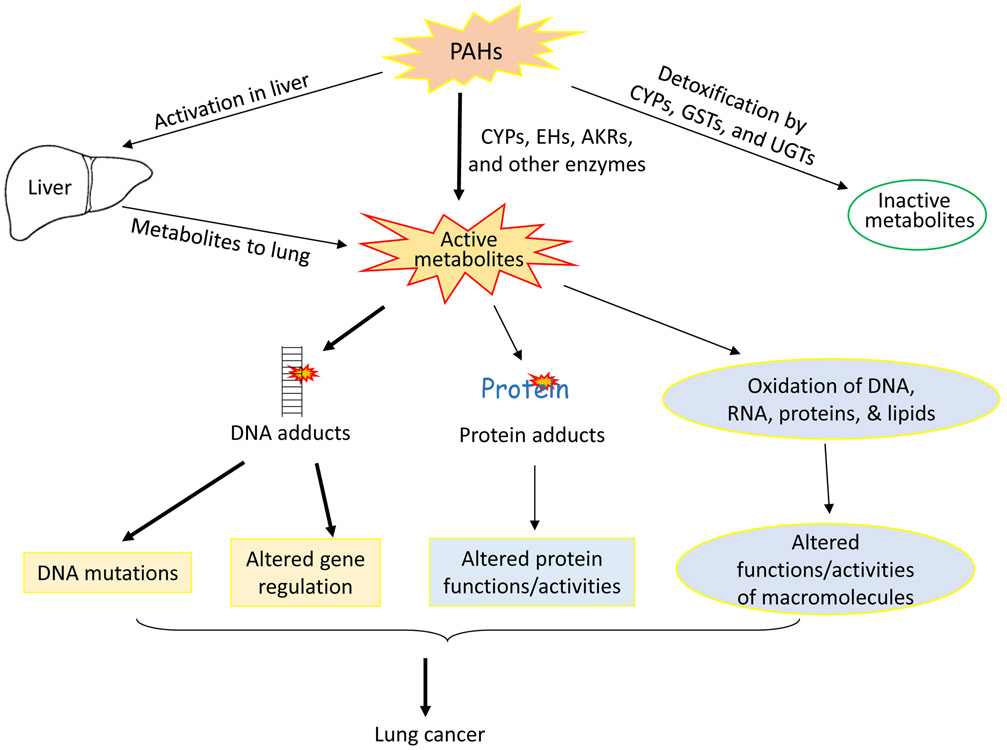Figure 3.
PAH exposure and resultant metabolism may produce inactive metabolites via the CYP, UDP-glucuronosyltransferase (UGT), or glutathione S-transferase (GST) pathways. Active metabolites may also be produced during PAH metabolism when metabolized by CYP1-epoxide hydrolase pathway or the aldo-keto reductase pathway. Production of these metabolites occurs in the liver as well, which can contribute to the effects seen in the lungs. These active metabolites can then form DNA adducts, resulting in DNA mutations and altered gene regulation. They can also form protein adducts, which directly alters protein function. Finally, the active metabolites may oxidize DNA, RNA, proteins, and lipids, contributing to altered function of macromolecules. All three of these alterations lead to lung cancer.

